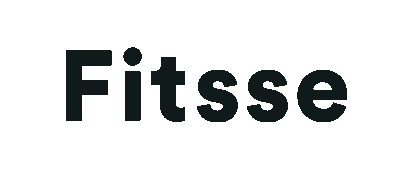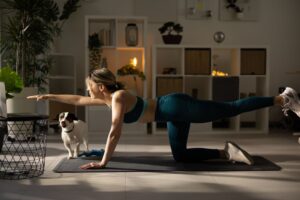Stretching is an essential yet often overlooked component of any workout routine. It’s tempting to skip it, especially when you’re short on time, but making it a regular part of your training can bring a host of benefits, from improved flexibility to reduced risk of injury and better recovery. Whether you’re into weightlifting, running, or calisthenics, the right stretching routines can elevate your performance and keep you in top form.
This article covers five essential stretching routines you should incorporate before and after your workouts, why they’re effective, and how to execute them properly.
The Importance of Stretching
Why Stretching Matters
Stretching is about more than just limbering up your muscles. It’s a practice that:
- Increases flexibility and mobility, allowing for a greater range of motion.
- Prepares the body for movement, warming up muscles and increasing blood flow.
- Reduces the risk of injuries by loosening tight muscles and tendons.
- Promotes recovery, helping the body cool down and easing post-workout soreness.
- Improves posture and body alignment, which can enhance your exercise form.
There are two main types of stretching to be aware of: dynamic stretching and static stretching. Dynamic stretching involves active movements that warm up the muscles, making it ideal before workouts. Static stretching involves holding a stretch for a longer period, helping to relax and lengthen muscles, making it better suited for after exercise.
Now, let’s dive into the 5 stretching routines you should include in your workout plan.
1. Dynamic Warm-Up Routine
A dynamic warm-up routine is a must before any intense exercise session. It primes your body for action, gets your heart rate up, and activates the muscles you’re about to use. This routine focuses on mobility exercises that will help enhance your performance, whether you’re weightlifting, running, or doing bodyweight exercises.
Key Stretches
- Leg Swings (Front-to-Back and Side-to-Side)
- How to Do It: Stand next to a wall for support. Swing one leg forward and backward like a pendulum for 15-20 repetitions. Then switch to side-to-side swings.
- Benefits: Loosens the hip joints and hamstrings, improving mobility for squats, lunges, and running.
- Arm Circles and Crosses
- How to Do It: Extend your arms out to the sides and make small circles, gradually increasing the size. Follow up with arm crosses in front of your chest.
- Benefits: Warms up the shoulders and increases mobility, crucial for upper body exercises like bench presses or pull-ups.
- Inchworms
- How to Do It: Stand straight, hinge at the hips, and walk your hands forward into a plank position. Hold for a second, then walk your hands back to your feet and stand up.
- Benefits: Engages the core, shoulders, and hamstrings, prepping your entire body for action.
- Hip Opener Stretch
- How to Do It: Stand tall and bring your knee up toward your chest, then rotate your hip outward. Alternate legs for 10-12 reps each side.
- Benefits: Activates the hip flexors and glutes, essential for lower body exercises.
- High Knees or Butt Kicks
- How to Do It: Perform high knees by jogging in place, driving your knees up toward your chest. For butt kicks, jog while kicking your heels up to touch your glutes.
- Benefits: Elevates the heart rate, warms up the legs, and engages the core, making it perfect before cardio or HIIT workouts.
Duration: Aim for 5-10 minutes of dynamic stretching to get your body warmed up and ready.
2. Lower Body Static Stretching Routine (Post-Workout)
After a lower-body-focused workout, like squats or running, it’s essential to target the legs and hips with static stretches. This routine helps release tension in the quads, hamstrings, calves, and glutes, aiding in recovery and reducing muscle soreness.
Key Stretches
- Standing Quad Stretch
- How to Do It: Stand on one leg, grab your opposite ankle, and pull it toward your glutes. Keep your knees close together and hold for 20-30 seconds per side.
- Benefits: Lengthens the quads and improves flexibility in the hip flexors.
- Seated Hamstring Stretch
- How to Do It: Sit on the ground with one leg extended and the other bent inward. Reach for your toes and hold the stretch for 20-30 seconds.
- Benefits: Targets the hamstrings and lower back, crucial for reducing stiffness after deadlifts or running.
- Butterfly Stretch
- How to Do It: Sit with your feet together and let your knees drop out to the sides. Hold your feet and gently press your knees down.
- Benefits: Opens up the hips and stretches the inner thighs, helping with flexibility and mobility.
- Figure Four Stretch
- How to Do It: Lie on your back, cross one ankle over the opposite knee, and pull your thigh toward your chest.
- Benefits: Targets the glutes and piriformis, relieving tension in the lower back.
- Calf Stretch Against the Wall
- How to Do It: Place your hands on a wall and step one foot back, keeping the heel on the ground. Lean forward until you feel a stretch in your calf.
- Benefits: Releases tightness in the calves, common after running or jumping exercises.
Duration: Hold each stretch for 20-30 seconds, repeating 2-3 times per side.
3. Upper Body Stretching Routine
For those focused on upper body strength training or activities like climbing or swimming, an upper body stretching routine is crucial for preventing tightness and improving range of motion in the shoulders, chest, and back.
Key Stretches
- Cross-Body Shoulder Stretch
- How to Do It: Bring one arm across your body and use the opposite hand to gently pull it closer to your chest.
- Benefits: Loosens the shoulders, perfect after push-ups or overhead presses.
- Chest Opener Stretch
- How to Do It: Stand with your hands clasped behind your back. Lift your arms slightly and pull your shoulders back.
- Benefits: Opens up the chest, counteracting the effects of slouching and heavy pressing exercises.
- Triceps Stretch
- How to Do It: Raise one arm overhead, bend the elbow, and use the opposite hand to press down gently on the elbow.
- Benefits: Lengthens the triceps and improves shoulder mobility.
- Cat-Cow Stretch
- How to Do It: Get on all fours. Arch your back (cow position) and then round it (cat position), flowing between the two.
- Benefits: Enhances spine flexibility and relieves tension in the back muscles.
- Child’s Pose
- How to Do It: Kneel on the ground, sit back on your heels, and stretch your arms forward, resting your forehead on the ground.
- Benefits: Gently stretches the back, shoulders, and hips, promoting relaxation and recovery.
Duration: Hold each stretch for 20-30 seconds and repeat 2-3 times as needed.
Conclusion
Incorporating these five stretching routines into your fitness regime can make a significant difference in your performance, flexibility, and overall well-being. Remember, the key to effective stretching is consistency. Listen to your body, breathe deeply, and make stretching a regular part of your workout routine. Your body will thank you for it!
Recent studies have shown that incorporating mindfulness techniques during stretching can enhance the benefits by reducing stress and improving mental focus. Additionally, using tools like foam rollers or massage balls before stretching can further aid in muscle relaxation and flexibility. As fitness trends evolve, there’s also a growing interest in combining stretching with other modalities, such as yoga or Pilates, to maximize overall body conditioning.








Stretching is often underestimated, but it clearly plays a crucial role in enhancing flexibility, reducing injuries, and improving recovery. Making it a consistent part of your routine can really pay off in the long run. Keep it up!